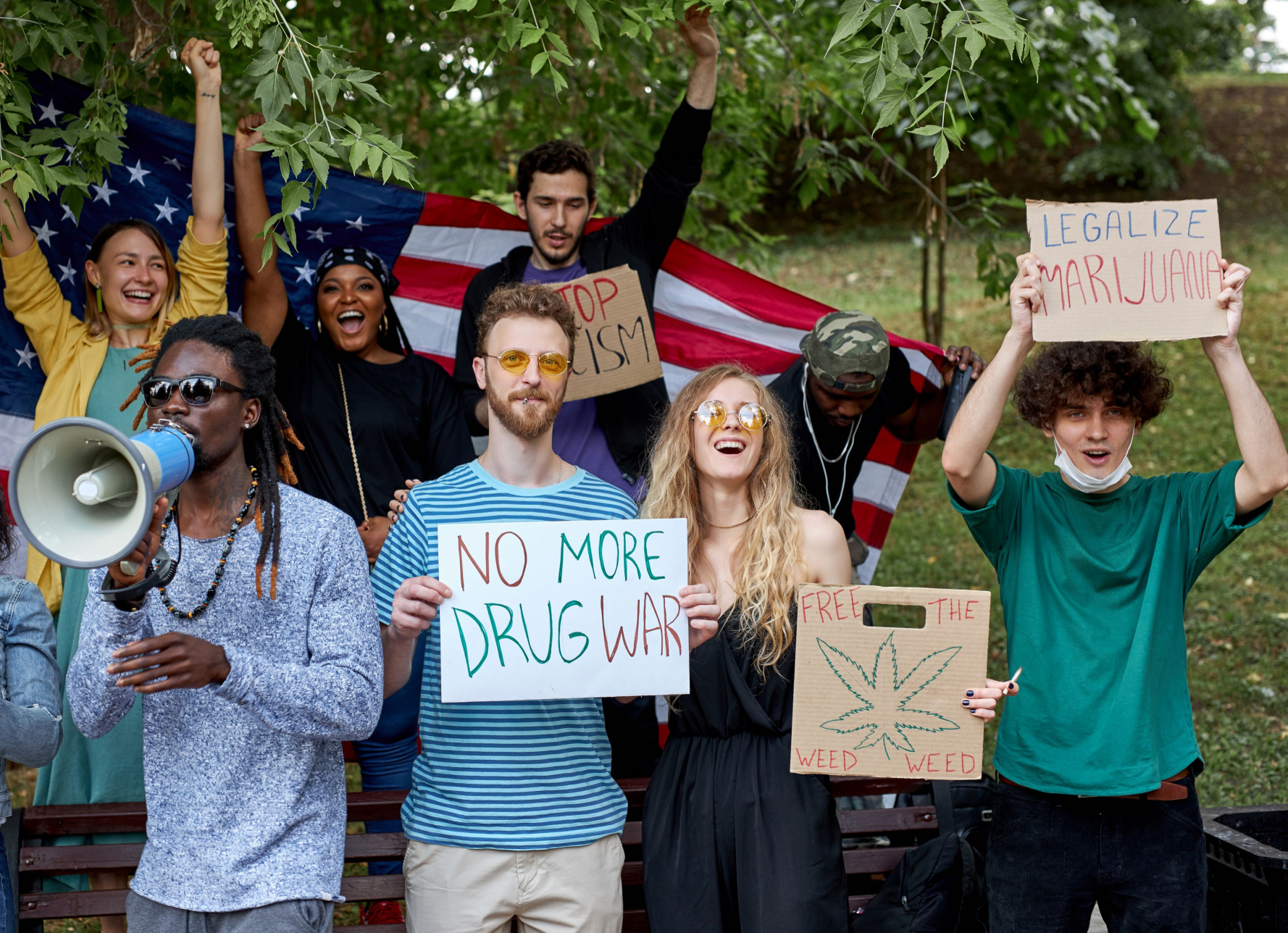At the time of this writing, 29 states as well as Washington D.C. have voted to legalize medical marijuana. An additional 8 states, including D.C., have also legalized cannabis for its recreational use. A far cry from the prohibition era of yesteryear, the ongoing normalization of cannabis has many historians looking to the past, trying to understand just why the plant was so vociferously attacked by the powers that be.
More than just a plant for recreational and medicinal benefits, cannabis has become a lightning rod of divisiveness in the political world. While more people than ever support its legalization for both recreational and medicinal use, there are still real hurdles preventing the plant’s full-scale acceptance.
To better understand cannabis and its place in our world, we must first understand the false stigma surrounding the plant.
The History of Cannabis
Cannabis use can be documented throughout history, dating back to 7,000 B.C. It was during those early years that cannabis was referred to as a medicine by the ancient Romans, Greeks, Egyptians, and Chinese. Originating in Asia, cannabis was commonly used to treat ailments including cramps and chronic pain.
While historians are still struggling to understand just exactly how the plant made its way through Asia and into North America, there are many common thoughts. Some historians suggest that the European soldier, Napoleon, had brought the plant with him to Europe in the 1800s following militant conquests throughout the Mediterranean. These European immigrants are thought to have then brought the plant to the New World.
Medicine and Prohibition
In the early days of its application, cannabis was considered almost entirely a medicinal property. Used for the treatment of a variety of maladies, cannabis was freely available at drug stores throughout the country in its refined form, hashish. In the early 1900s, it was not common to consume cannabis as a recreational drug and this was furthered in 1906 by the Pure Food and Drug Act.
The 1906 Pure Food and Drug Act would demand that cannabis be listed among all other substances on labels for worried customers looking to avoid the plant. A few years later, twenty-six states would pass laws that culminated in the prohibition of the plant.
From 1920 to 1933, the Prohibition Era would do major damage to the societal outlook of the plant as well as its functional efficacy in the world. While drinkers turned to cannabis when alcohol was lacking, the prohibition-era boom of cannabis would decline after alcohol was legalized once more.
The Hemp Industry
Cannabis would maintain a foothold in America thanks to its hemp plant fiber, which had been in use for thousands of years. One of the primary ingredients in rope, twine, paper, and cloth, the industrialized hemp industry would become integral to the U.S. economy. In the early years of America’s founding, hemp farming was borderline mandated by the government as the plant was effective in several important production areas.
Racism and Cannabis: The Stigmatization of a Plant
By the turn of the 20th century, cannabis was a relatively uncommon drug among Americans. This would change after the Mexican Revolution.
Mexican immigrants fleeing the war found refuge in the U.S. and with them they would bring marijuana. Hysterical claims about Mexican immigrants circulating marijuana, causing a ‘lust for blood and crime’, would soon dominate social circles.
Anti-immigrant fears led to bigotry, which would then institute the first marijuana laws that aimed to place social control on the Mexican immigrant population and drive the false stigma surrounding marijuana, prompting many states to ban the drug and further the aforementioned xenophobia.
The Marihuana Tax Act
Harry J. Anslinger, head of the Federal Bureau of Narcotics, would continue the war on cannabis by continuing to stoke fear of minorities. Anslinger would lay serious negative and racially charged claims about minority individuals, claiming that the consumption of cannabis would lead to so-called Reefer Madness. Anslinger would eventually helm the Marihuana Tax Act of 1937, making cannabis illegal throughout the United States.
The Controlled Substances Act was signed in 1969 through the efforts of President Nixon. The Controlled Substances Act was integral to the war on drugs, leading to the classification of marijuana alongside such serious substances as heroin and LSD.
The Shafer Commission, which was appointed by Nixon to justify his classification of marijuana, would eventually show evidence that cannabis did not cause widespread danger to society. The Shafer Commission even recommended using social measures other than criminalization to discourage use of the drug but was disregarded by President Nixon.
In the blink of an eye, cannabis had gone from a household substance grown in the yard to a deeply illegal drug. Perhaps spurned on by Anslinger’s efforts, studies following the Controlled Substances Act would reveal that African Americans were nearly four times more likely to be arrested on marijuana-related charges than their white counterparts.
The War on Drugs: In Schools Near You
While cannabis has a long history of successful use as a medicine, most recent generations were likely introduced to the plant through the DARE program.
Implemented by President Reagan and his administration, the United States government would heavily push a Just Say No campaign. This would lead to the formation of the Drug Abuse Resistance Education program in 1985. The program was part of a wider media campaign against cannabis, fueled by more than 1.2 billion in federal funding.
The DARE program was ultimately curtailed when study after study revealed that it lacked efficacy, often sparking more curiosity in potential users.
The Road to Legal Cannabis
In the past several decades, the reputation of cannabis has grown healthily alongside its legality. More states than ever have openly embraced legal recreational cannabis, leading many at the federal level to begin wondering if it is time for broader actions.
Despite the widespread acceptance of cannabis and its continued legalization, more than 800,000 Americans are arrested and potentially incarcerated every single year for marijuana-related offenses.
With rumblings from the Biden Administration suggesting that federal legalization is on the table, the road to legal cannabis may arrive in North America sooner than we might imagine.

